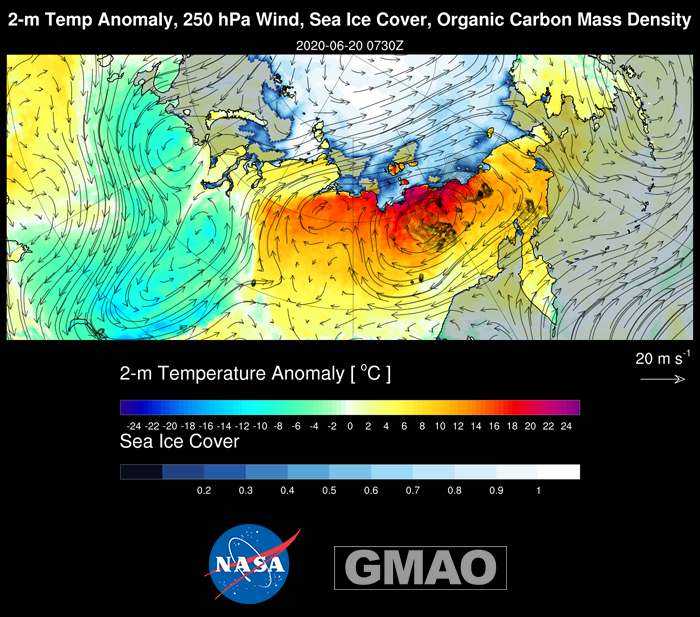All-time Highs in the High Latitudes: Siberia 2020
An historically warm first half of 2020 across Siberia was punctuated in June by a record-smashing heatwave. This heatwave, which was focused across Northeastern Siberia, exhibited many of the characteristics in common with other such intense heatwave and drought events of recent years, such as in the summer of 2010. Key research findings (Schubert et al., 2014) have identified the important role of summertime stationary Rossby waves in developing and strengthening the dome of high pressure, where the affected region sizzles.
This animation clearly demonstrates the heat increasing over the course of several days within such a stationary Rossby wave weather regime. We may contrast this in-situ Siberia event to another high-latitude heatwave which occurred in late July 2019 over Greenland. In the 2019 case, the unusually warm air mass was transported by the upper-air flow from Europe to Greenland. This “advective” type of heatwave tends to be a bit easier for weather prediction models to resolve than the in-situ type heatwave seen in this event. Researchers among the various modeling groups are examining various aspects of the model, such as antecedent soil temperatures and radiative properties, to better understand why forecasts tend to not be as severe as the extreme temperatures that are actually observed.
The Siberian region is generally associated with the coldest wintertime temperatures found in the Northern Hemisphere. Some of the more incredible records that were reportedly broken with this summertime heatwave the include station values for Verkhoyansk, Russia (67°N, 133°E):
- Highest temperature recorded this far north (38°C / 100.4°F)
- Largest temperature range between the coldest and warmest readings for any particular location (a range of 105.8°C / 190.4°F)
The unusually warm late-winter and spring conditions, the early loss of an underlying snowpack, and the development of a stationary Rossby wave pattern all played critical roles resulting in the June 2020 heatwave. The animation also indicates widespread carbon smoke from wildfires that rapidly developed as a result of the hot, dry conditions. Smoke from these fires plays a role in sustaining warm conditions by radiating thermal energy back to the surface. These fires will become quite important to keep track of as the heart of the summer wildfire season rapidly approaches over Siberia.
Reference:
Schubert, S. D., H. Wang, R. D. Koster, M. J. Suarez, and P. Y. Groisman, 2014: Northern Eurasian Heat Waves and Droughts. J.Climate, 27, 3169-3207, DOI:10.1175/JCLI-D-13-00360.1.


